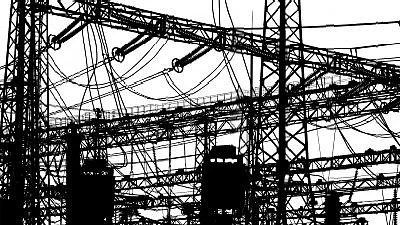The world is facing it's very first energy crisis on a global scale, an unprecedented predicament sparked by Russia and Ukraine's ongoing war, according to the International Energy Agency in their new report-- World Energy Outlook 2022.
The report also emphasised on unaffordable energy bills that have gone up as the exports of oil and gas have been restricted.
"The heaviest burden is falling on poorer households where a larger share of income is spent on energy", the report said.
What’s the Significance?
The crisis has strained global supply chains and sent energy prices skyrocketing. This has created a domino effect for series of smaller crises-- food insecurity, possible economic recession etc.
What are the effects?
Fuel prices for natural gas, coal and oil have reached a record high
High gas and coal prices account for 90 percent of the upward pressure on electricity costs around the world
The crisis has stoked inflationary pressures and created a looming risk of recession
Approximately 75 million people who recently gained access to electricity are likely to lose the ability to pay for it
Faced with energy shortfalls and high prices, governments have so far committed well over USD 500 billion, mainly in advanced economies, to shield consumers from the immediate impacts
Russia’s invasion of Ukraine is prompting a wholesale reorientation of global energy trade
Energy Transition in India
India becomes the world’s most populous country by 2025 and due to rapid urbanisation and industrialisation, energy demand rises by more than 3% per year in the Stated Policies Scenario (STEPS) from 2021 to 2030
India continues to make great strides with renewables deployment and efficiency policies. However, the sheer scale of its development means that the combined import bill for fossil fuels doubles over the next two decades in the STEPS
Coal generation is projected to continue to expand in absolute terms in the STEPS, peaking around 2030
Though electricity generation falls from just below 75% to 55% over this period
Renewables meet more than 60% of the growth in demand for power, and account for 35% of the electricity mix by 2030
What Could This Mean for the Future of Energy?
At this tipping point, there is enormous potential for faster progress towards a more sustainable, secure and affordable energy system
Industries have announced manufacturing expansion for batteries, solar PV and electrolysers. Manufacturing capacity could exceed the deployment levels in the Announced Pledges Scenario (APS) in 2030 by around 75 percent
Investment in low-emissions gases is set to rise sharply in the coming years. In the APS, global low-emissions hydrogen production rises from very low levels today to reach over 30 million tonnes (Mt) per year in 2030
From USD 1.3 trillion presently, clean energy investment rises above USD 2 trillion by 2030 in the Stated Policies Scenario (STEPS)
What Is Required for a ‘Brighter’ Future?
According to the report, the crisis has put immediate pressure on governments around the world to tighten policies to protect themselves for the worst case scenario. This could also lead to better research and development into alternate energy sources.
A new energy security paradigm is needed to maintain reliability and affordability while reducing emissions.
The world needs to avoid new vulnerabilities arising from high and volatile critical mineral prices or highly concentrated clean energy supply chains.
Full achievement of all climate pledges would move the world towards safer ground, but there is still a large gap between today’s ambitions and a 1.5 °C stabilisation.
Investments in clean electricity and electrification, along with expanded and modernised grids are needed to offer clear and cost-effective opportunities to cut emissions more rapidly while bringing electricity costs down from their current highs.
Governments Around the World Respond to the New Crisis
By 2030, thanks in large part to the US Inflation Reduction Act, annual solar and wind capacity additions in the United States grow two-and-a-half-times over today’s levels, while electric car sales are seven times larger.
New targets continue to spur the massive build-out of clean energy in China, meaning that its coal and oil consumption both peak before the end of this decade.
Faster deployment of renewables and efficiency improvements in the European Union bring down EU natural gas and oil demand by 20% this decade, and coal demand by 50%.
Japan’s Green Transformation (GX) programme provides a major funding boost for technologies including nuclear, low-emissions hydrogen and ammonia.
India makes further progress towards its domestic renewable capacity target of 500 gigawatts (GW) in 2030, and renewables meet nearly two-thirds of the country’s rapidly rising demand for electricity.
